Alexa, Google Home, and Facebook smart devices are becoming more and more commonplace in the home. Although many individuals only use these smart devices to ask for the time or weather, They provide an important edge controller for the Internet of Things infrastructure.
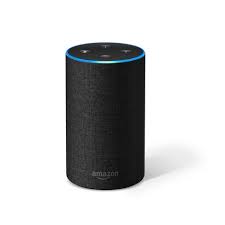
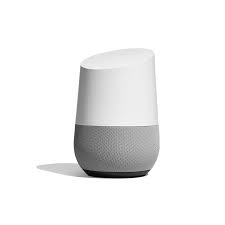
Unknown to some consumers, Alexa and other smart devices contain multiple microphones. Alexa uses these microphones in order to determine the direction of the speaker, and display a light almost as if to “face” the user. This localization function is also very important for processing whatever is about to be said after “Alexa”, or “OK Google”.
In our research lab, this kind of localization is important and we hope to extrapolate more from individuals’ interactions with their home smart speaker. The final details of the experiments we hope to run and not yet concrete. However, we know that we will have to have our own Alexa-like device that can do studio recording with a number of different channels.
This project was led by Uriah Jones and myself, with input from all members of the team. The original goal was to design a microphone array and speaker housing, using the Lavalier microphones that are currently being used in experiments. We looked at the different designs of the commercial products and tried to identify the changes made between each generation of product. Although we found a shift from sharp to rounded edges and the addition of cloth material around the microphones, we decided to use the full size Amazon Alexa tower as our design inspiration.
Similar to the Alexa tower, we planned on using a ~2 inch driver for superior sound quality over a smaller speaker. This forced us to reconsider our original design where the microphones were surrounding the speaker. In our final design, which can be seen below, the microphones sit much lower on the device, under the speaker housing. This is a deviation of the Alexa tower speaker which has all 7 of its microphones located at the top of the device.
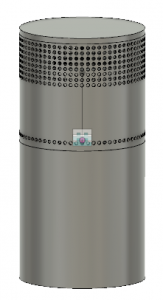

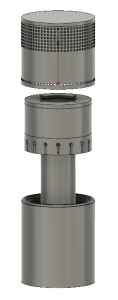
Because our experiments are not completely finalized yet, we wanted to make our speaker reconfigurable as to record data with a number of different channels. We decided on a maximum of 16 channels, because that is the number of Lavalier microphones that we have.
Our first challenge in this project was to create the housing for the small microphones. In order to make ensure easy setup and teardown of the system, we had to create a way to place and remove the mics without damaging them. After taking measurements, we 3D printed 1/16th of the microphone housing in order to test the ability of the easy release mic holder.
Our first iteration was too tight, and highlighted an important issue: the cable was not stiff enough to be able to push the mic out without damaging it. Our initial hope was that the curved shape of the housing would allow us to simply apply light pressure to the cable, and the mic would pop back out.
Our second 3D printed piece had the perfect dimensions for holding the microphone, although we still were not able to push the mic out without a lot of pressure.
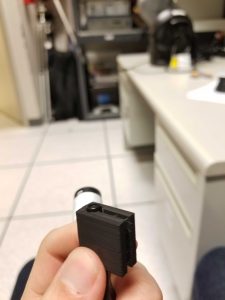
Ensuring a snug fit for the microphone is more important, so we decided an easy fix would to attach thread to each mic that would allow us to pull it out without any damage. A future iteration of the design might include spring loaded clamps to hold the mics, however we are more focused on completing a Proof-of-Concept before we begin work on more intricate designs.
Currently, we are planning to do a full print in order to see how the pieces fit together, and whether or not the tolerances were correct. Please cehck back in the future for more updates!

